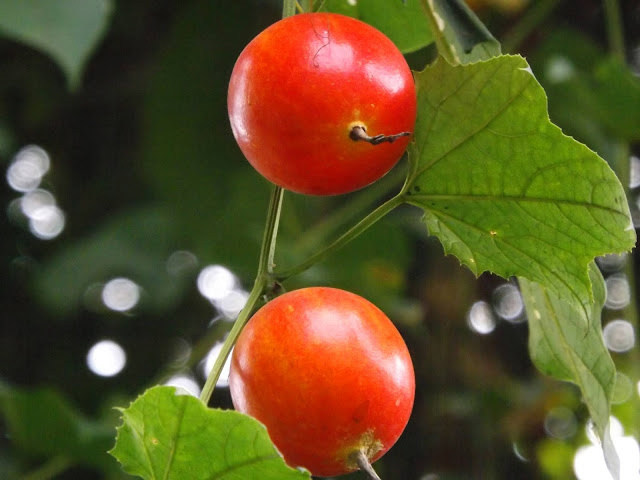Soborjala or Climbing Croton, Croton caudatus
It is found mainly in Gajipur, Dhaka, Mymensingh, Sylhet, Chattogram and Chattogram Hill Tracts. Outside of Bangladesh, it is found in the Indian subcontinent, China and some countries in South and Southeast Asia. The bushy climber can live up to 10 years approximately.
Local names : Nanvantui, Nanbhantur.
Leaves are entire, narrowly to broadly ovate, 5-9 cm long , 2-6 cm wide, petiole .5-2.5 cm long with densly stellate hairs, irregularly dentate or crenate-dentate, hairy to subglabrous on both sides, obtuse or acute at the end. Midrib and main veins stellate-hairy. Veins 3-6. Leaves break when dry. Stipules 1 mm long. Young leaves are conspicuous, bronze-colored.
Tiny flowers are in raceme inflorescence, 12-20 cm long, covered with stellate-hairs. Petals and sepals of male flowers are equal and borne in upper parts of the inflorescence, gathering up to 10 flowers. Females are borne in the lower parts of inflorescences.
Flower appears in April. Capsule globose, having 3-6 lobes. Seeds 3, covered with stellate hairs. The propagation of the plant is caused by seeds.
Leaves are used as poultice on sprains. Powder from young leaves is used in liver diseases. The yellowish-white wood is hard, can be used as fuel. Its roots extract is usede to increase body strength. Baskets are made from its stem somewhere.
Synonyms: Croton caudatus var. genuinus, Oxydectes caudata, Heterotypic Synonyms, Croton aromaticus, Croton caudatus var. denticulatus, Croton caudatus var. globosus, Croton caudatus var. harmandii, Croton caudatus var. hispidus, Croton caudatus var. malaccanus, Croton caudatus var. oblongifolius, Croton caudatus var. obovoideus, Croton caudatus var. ruminatus, Croton caudatus var. tomentosus, Croton denticulatus, Croton drupaceus, Croton malvifolius, Croton racemosus, Oxydectes denticulata.









ভালো লাগল
ReplyDeleteঅসাধারণ
ReplyDeleteভালো
ReplyDelete